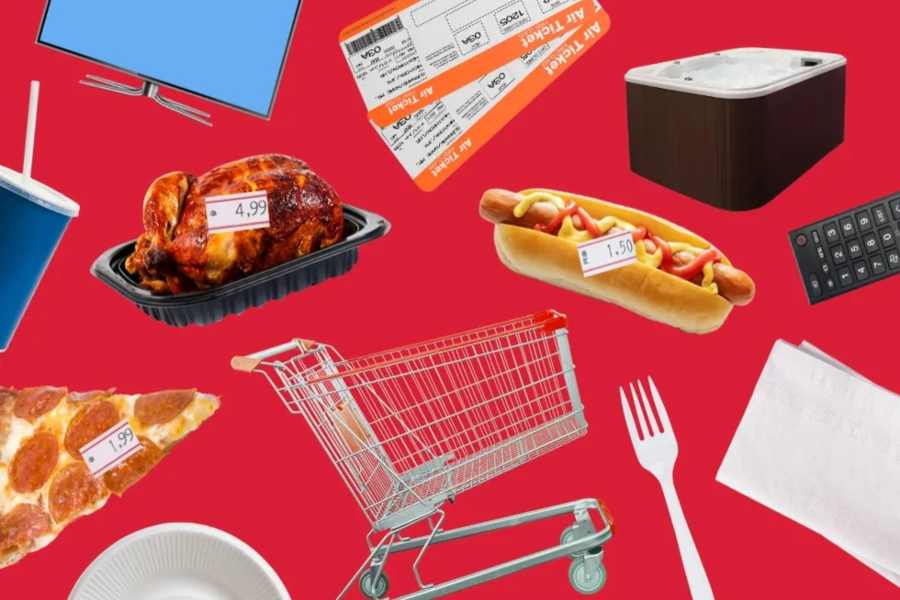When Ann Watson entered her local Costco in O’Fallon, Missouri, last October, she came with a plan: buy toilet paper and paper towels—nothing more. But Costco had other ideas.
The 37-year-old nurse and mother of three had already packed her home with warehouse finds like a $330 Halloween skeleton and a $1,000 backyard playset. Determined not to deviate, she issued a warning to her husband: “Stick to the plan.”
That plan derailed the moment she saw the hot tub.
“It was just so sparkly, shiny, and beautiful,” she recalled. Not long after, Watson was signing papers for a five-seat, saltwater luxury spa with a $23,000 price tag—her biggest impulse buy yet.
Watson’s story isn’t unique. Millions of Costco shoppers find themselves wandering in for a rotisserie chicken and walking out with a kayak, mattress, or even gold bars. What drives this spending spree? It’s a phenomenon known as the “Costco effect,” and it’s helped make Costco the world’s third-largest retailer, trailing only Amazon and Walmart.
The Spell Costco Casts on Shoppers
It starts with the food court. A $1.50 hot dog combo lures customers inside, where the real magic begins. Shoppers often describe the experience as surreal. “It’s like a spell gets cast the moment you swipe your membership card,” said Natalia Stefanioutine, a 57-year-old software professional in San Jose, California.
Stefanioutine and her husband are self-proclaimed Costco fanatics. Every week, they build a shared shopping list, but once inside, they split up and go hunting for surprises. A $150 trip easily turns into $300—or more.
That “treasure hunt” vibe is by design. Costco stocks only about 4,000 products—far fewer than most large retailers—but it rotates them frequently. Shoppers know if they don’t act fast, that enticing product might not be there next time. So they pounce.
“You walk in for toilet paper and end up with a paddleboard,” said Karen Morrison, 61, a retiree from North Carolina who drives over an hour for her monthly Costco run. “I always walk out with way more than I planned.”
Impulse Buys Are Big Business
Costco’s business model thrives on these splurges. While most people think of it as a food retailer, non-food items make up around 25% of the company’s total revenue, and they come with higher profit margins.
“It’s smart retail psychology,” said Neil Saunders, managing director of GlobalData Retail. “Costco brings people in with essentials and tempts them with limited-time, high-value items. The strategy works because the items really are great deals.”
That trust in quality and pricing keeps customers coming back—and opening their wallets. Even big-ticket items like luxury spas, diamond rings, and high-end electronics are snapped up regularly.
Costco’s Layout Is Engineered to Tempt
There’s a method to the madness in every warehouse. High-end, attention-grabbing items greet you right at the entrance. Essentials? They’re tucked away in the back, forcing shoppers to navigate a gauntlet of tempting products before they can grab milk or TP.
“There are no aisle signs, and things move around,” said Paco Underhill, retail expert and author of Why We Buy: The Science of Shopping. “That’s intentional. It slows people down and makes them explore.”
And that exploration leads to discovery. Shoppers find things they never knew they needed—until they saw them at Costco.
“I went in for groceries and walked out with a kayak,” laughed Scott Goldstein, a 41-year-old marketing director from Cambridge, Massachusetts. “And I forgot the groceries.”
The Membership Mind Game
Another psychological trick Costco pulls off flawlessly: the membership fee.
At $60 for a standard membership and $120 for an executive one, customers are already financially invested. That investment nudges them to make the most of their visit. And with average product markups of just 11%—compared to 25–50% at other retailers—Costco’s deals feel too good to pass up.
The membership model also fuels customer loyalty. “You feel like you’ve joined a club,” said Cristal Hernandez, a 35-year-old from Stockton, California. “It’s more than a store—it’s an experience.”
Hernandez and her husband buy nearly everything from Costco, from groceries to tires. Even a mattress ended up in their cart on a whim during the pandemic. “There’s just something in the air at Costco,” she joked.
When Impulse Buys Become Household Essentials
For some, impulse buys end up becoming cherished parts of daily life. Morrison, the North Carolina retiree, said the hot tub she snagged on a discount for $3,000 turned out to be a pandemic lifesaver. It kept her family relaxed during lockdown—and even provided toilet-flushing water when a hurricane knocked out their water supply.
But not every impulse buy hits the mark. Goldstein, the kayak enthusiast, once bought a drone from Costco. “My wife looked at me and said, ‘Are you really going to use that?’” he recalled. “That went back pretty quickly.”
He estimates that he returns about a third of the $300 he spends monthly at Costco. Still, he keeps going back. So do the 140 million members worldwide who fuel Costco’s $242 billion annual revenue.
Will Economic Headwinds Slow the Costco Effect?
While Costco has largely weathered economic storms, rising tariffs and inflation may start to chip away at shoppers’ spontaneity.
“They’re still willing to spend, but they’re being more selective,” said CFO Gary Millerchip during a recent earnings call. That could mean fewer hot tubs and more grocery-only trips in the future.
Still, Costco continues to offer irresistible value. Whether it’s the allure of bulk discounts or the thrill of discovering something new, Costco knows exactly how to make shoppers feel like they’re winning—even when they’re spending far more than planned.
And for people like Ann Watson, that $23,000 spa was worth every penny.
“We couldn’t afford a pool,” she said. “But the hot tub? The kids love it. I love it. No regrets.”
So next time you pop in for a chicken, beware. The Costco effect might just soak you in a sea of sparkling saltwater.
